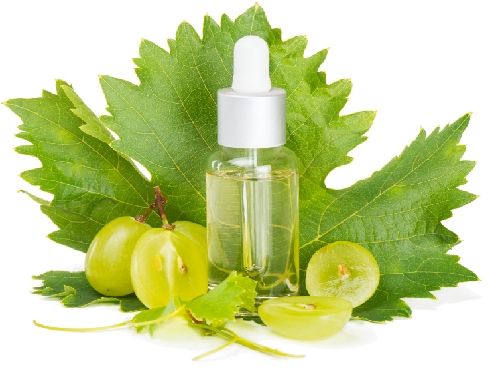 Face oils have been all the rage for the past few years, each one seemingly taking center stage one year and being supplanted by another the next year.
Face oils have been all the rage for the past few years, each one seemingly taking center stage one year and being supplanted by another the next year.
We’ve worked our way through argan, coconut, rosehip seed, jojoba, and almond oil, all of which are good plant oils that deliver extensive moisture to the skin, keeping it looking plump, fresh, and youthful.
The latest to gain buzz is grapeseed oil for the skin. This oil comes from the pressing of grape seeds, not from the skins or flesh of the grape; those parts don’t have the beneficial oils.
As with the other oils used for beauty regimens, grapeseed oil is a great way to add complete moisture if your skin is severely dry or has patches of dryness. Many people enjoy using oils on the face because of their essential fatty acid and vitamin content. Grapeseed oil is high in essential fatty acids and also has vitamin E, which is important for its antioxidant benefits—it helps fight off damaging free radicals that wreak havoc on the skin, a process that adds up over the years.
What Kind of Grapeseed Oil Should You Buy?
The cosmetics industry wants us to spend incredible amounts of money on beauty products, and these products are promoted by savvy marketing campaigns that would have us believe we need them. So when it comes to buying beauty products, being a smart consumer is the best approach to take to save you from dishing out more money than is necessary. Face oils are a perfect example of this.
Paula Begoun wrote the bestselling beauty bible Don’t Go to the Cosmetics Counter without Me (now in its ninth edition) which tells women exactly how it is in the beauty and cosmetics world. Begoun says that women get sucked into paying more than needed and that oils found in the health food store will work just as well as those at the beauty counter—and for a fraction of the cost. And she’s right. So with that said, let’s see what exactly grapeseed oil can do for skin and hair!
Benefits of Grapeseed Oil for the Skin
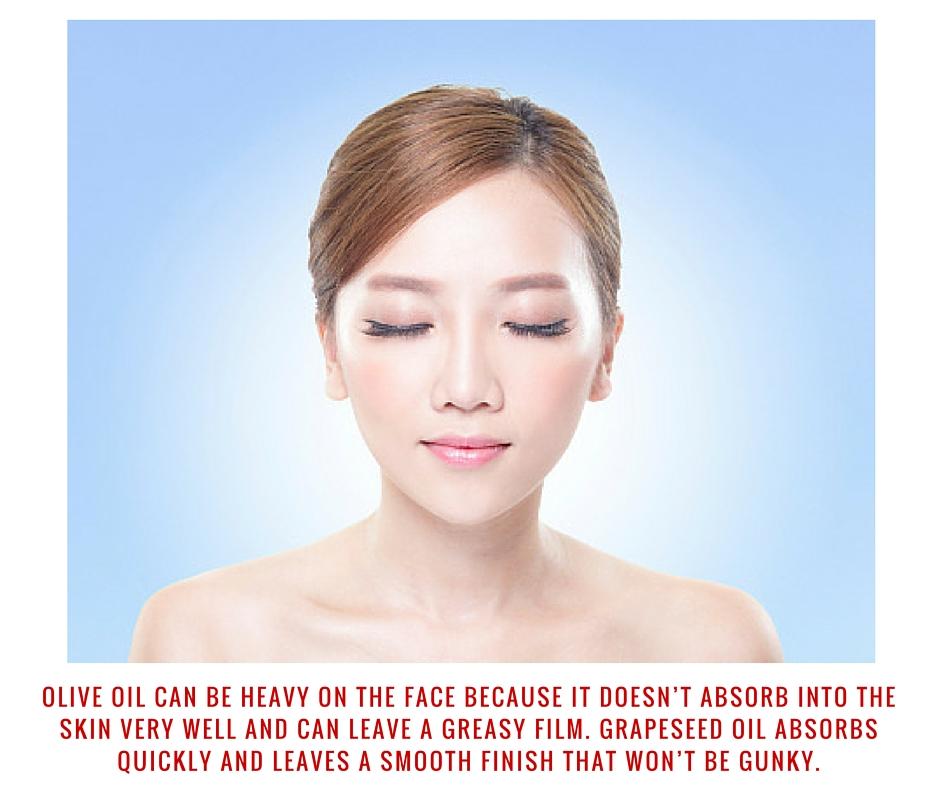
Grapeseed oil for the skin (1) is an optimal moisturizer, especially in cold climates where the delicate layers of facial skin can be stripped away and irritated. The oil itself is light and easily absorbs into the skin, which is ideal because you don’t want a greasy face when sleeping or cuddling up.
This is the essential difference in using grapeseed oil vs olive oil for skin. Olive oil has been used for thousands of years, as far back as ancient Greece. It was used not only for cooking but for beauty applications, providing women with healthy, glossy hair. Olive oil is fantastic as a hair mask and, along with coconut oil, makes for a terrific conditioning treatment that soaks hair in intense moisture. But it can be heavy on the face because it doesn’t absorb into the skin very well and can leave a greasy film—not very appealing. For that reason alone, opt for grapeseed oil. It absorbs quickly and leaves a smooth finish that won’t be gunky and bothersome.
Top 5 Benefits of Grapeseed Oil for the Skin
1. Grapeseed Oil for Acne

Grape seed oil contains linoleic acid, which helps strengthen cell membranes, which, in turn, improves how your skin looks.
Grapeseed oil for acne sounds counterintuitive, but it’s actually a smart approach to dealing with the problem. Grape seed oil contains linoleic acid, which helps strengthen cell membranes, which, in turn, improves how your skin looks. Using it regularly will help get rid of pimples and even scars. The antioxidants in the oil prevent the pores from clogging up; most of the time, clogged pores are what cause acne.
2. Reduce Wrinkles and Scars
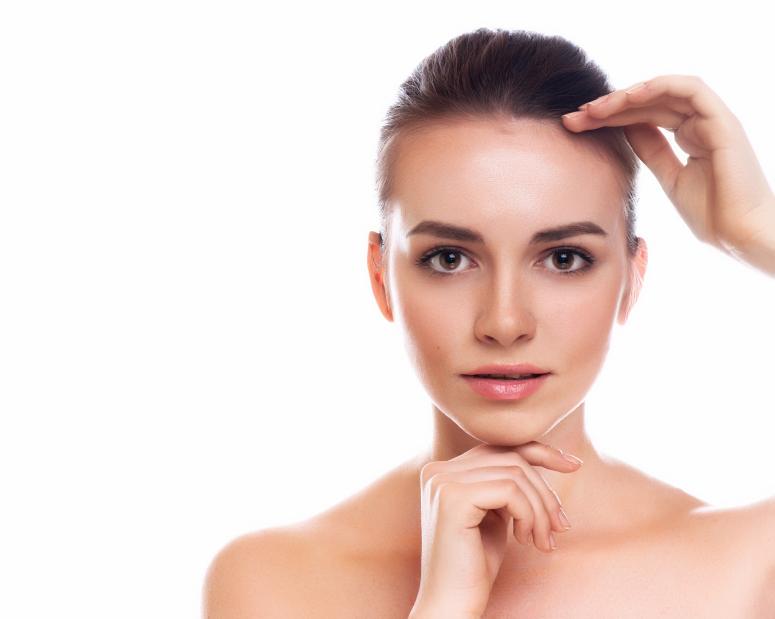
Grapeseed oil has a good amount of essential fatty acids, which are known to help reduce wrinkles and the appearance of scars.
Grapeseed oil is high in beta-Carotene and vitamins D, C, and E, and, as noted earlier, has a good amount of essential fatty acids, specifically, palmitic, stearic, and linoleic acids. These particular ones are known to help reduce wrinkles and the appearance of scars. The oil works better on fresh scars, but older scars will also diminish over time with consistent application.
3. Cleanser

Take a cotton makeup pad or a cotton ball and soak it with grapeseed oil (but don’t drench it), then swipe it all over your face with a little pressure to clean.
Believe it or not, you can cleanse your skin with oil. It’s a safe and gentle way to remove dirt, oil, and makeup without stripping the skin of essential oils. Many makeup removal products have alcohol in them, which dries out the skin. Oils will remove dirt and makeup and replace moisture.
The process is simple: take a cotton makeup pad or a cotton ball and soak it with oil (but don’t drench it), then swipe it all over your face with a little pressure to clean. Depending on how much makeup you wear, you may need to use a second pad. It will be hard at first to get over the desire to wet your face to make it feel clean, but over time you will appreciate the gentle application of oil. Mix it up if you like and wash your face in this manner a few times a week. Your skin will thank you!
4. Intense Moisturizer
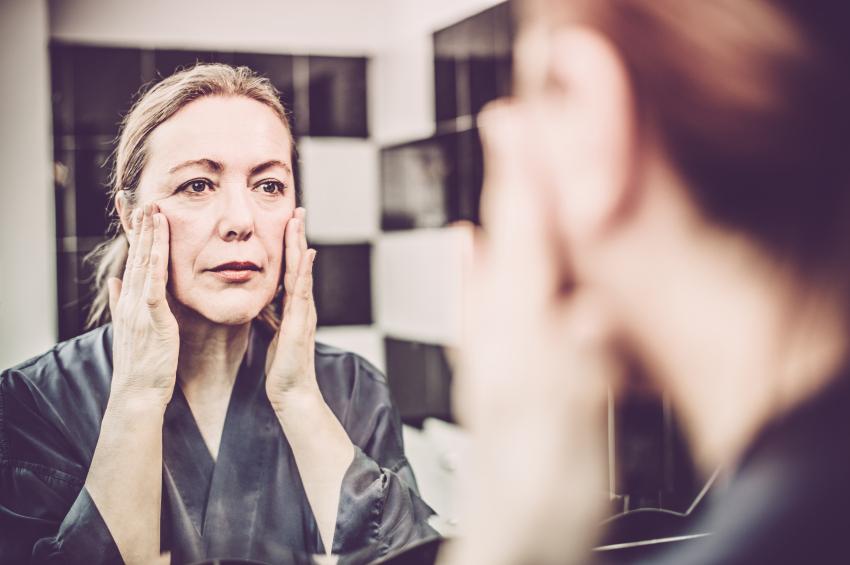
Grapeseed oil is light and absorbs well, especially when used on damp skin, so use it directly after cleansing.
All plant-based oils can deliver good moisture to parched skin, but the quality of the oil and how it absorbs into the skin is what matters. Grapeseed oil is light and absorbs well, especially when used on damp skin, so use it directly after cleansing. If you have particularly dry skin, feel free to use it twice a day; otherwise, once in the evening is sufficient. Because oils can’t deliver everything your skin needs, it’s best to use it as an addition to your other skin products.
5. Treats Dark Circles
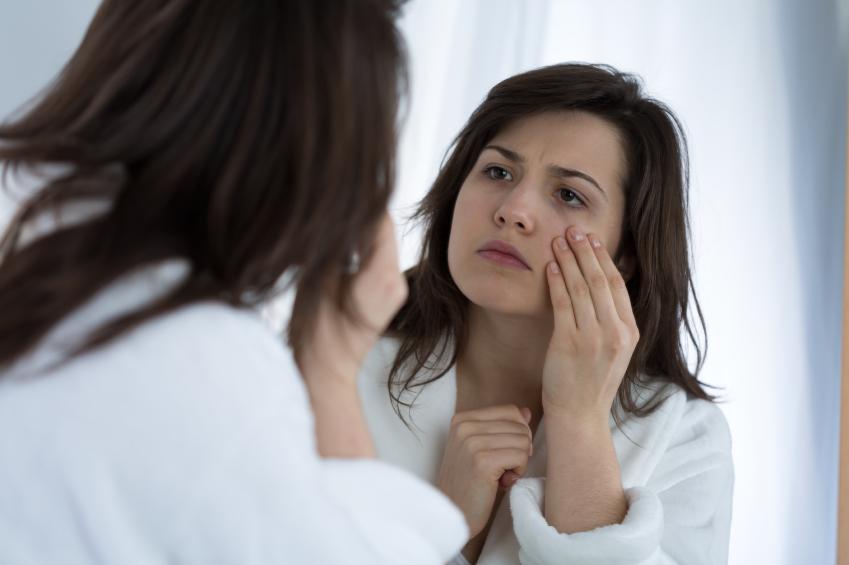
Grapeseed oil may help get rid of the dark circles under your eyes.
Say goodbye to dark circles under your eyes with this relatively inexpensive oil. Dab a few drops of the oil under your eyes and rub them in very gently in upward strokes towards your cheekbones. Do this treatment every night before bed.
Grapeseed Oil for Hair
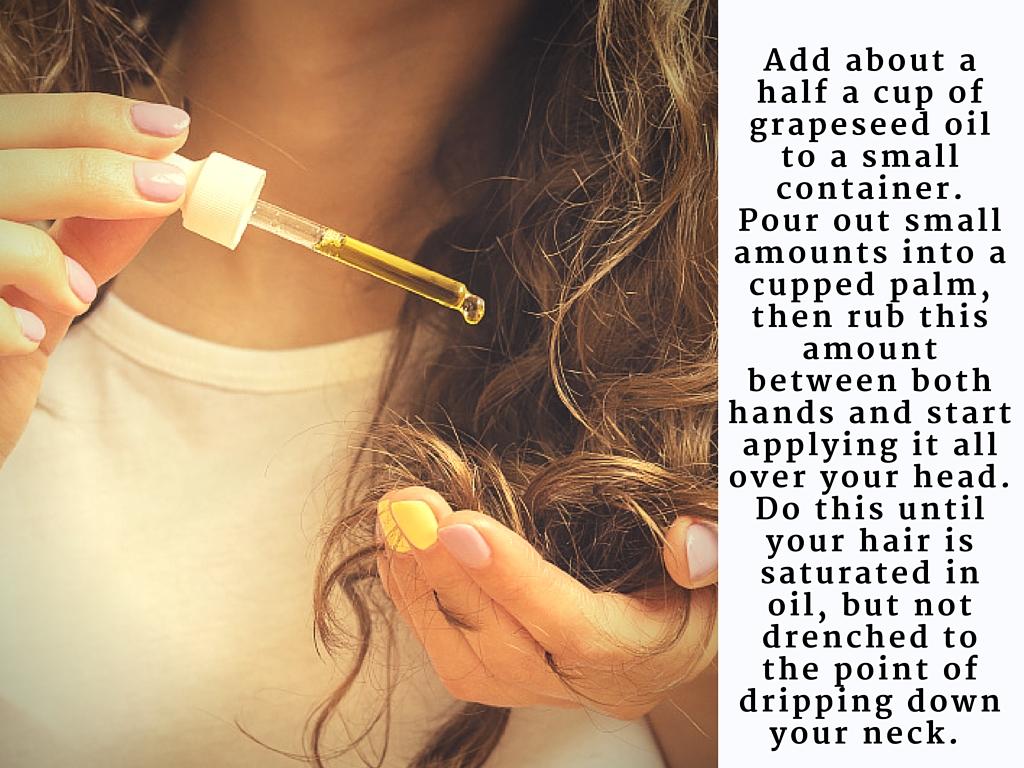
This is a great oil for the hair, though all plant-based oils can do the same job—it’s really a matter of preference. To get the most out of using grapeseed oil for hair, wash your hair and then pat it dry until it’s damp. (Alternatively, the oil can be applied to dry, unwashed hair.) You can apply the oil straight from the bottle or warm it up on the stove or microwave a bit, so that it acts like a hot oil treatment. The heat will open up the hair cuticles a bit more, allowing for deeper penetration of the oil. Either option is fine.
Add about a half a cup of oil (you can adjust this amount depending on your hair’s thickness and length, but don’t skimp on it) to a small container. Pour out small amounts into a cupped palm, then rub this amount between both hands and start applying it all over your head. Do this until your hair is saturated in oil, but not drenched to the point of dripping down your neck.
If your hair is long, wrap it up in a bun. A trick to locking in even more moisture is to cover your hair in cellophane wrap and allow the oil to soak in for a few hours if possible. If not, do it for as long as you can, and then wash the oil out with shampoo. No need to condition after this treatment, unless you feel you need to. Do this once a week for gorgeous, healthy locks.
Using grapeseed oil for the skin is great, but it can also combat dandruff and strengthen hair, plus it’s hypoallergenic, so it’s safe to use on even the most sensitive of scalps and skin. And it makes hair so shiny!
Read Next:
